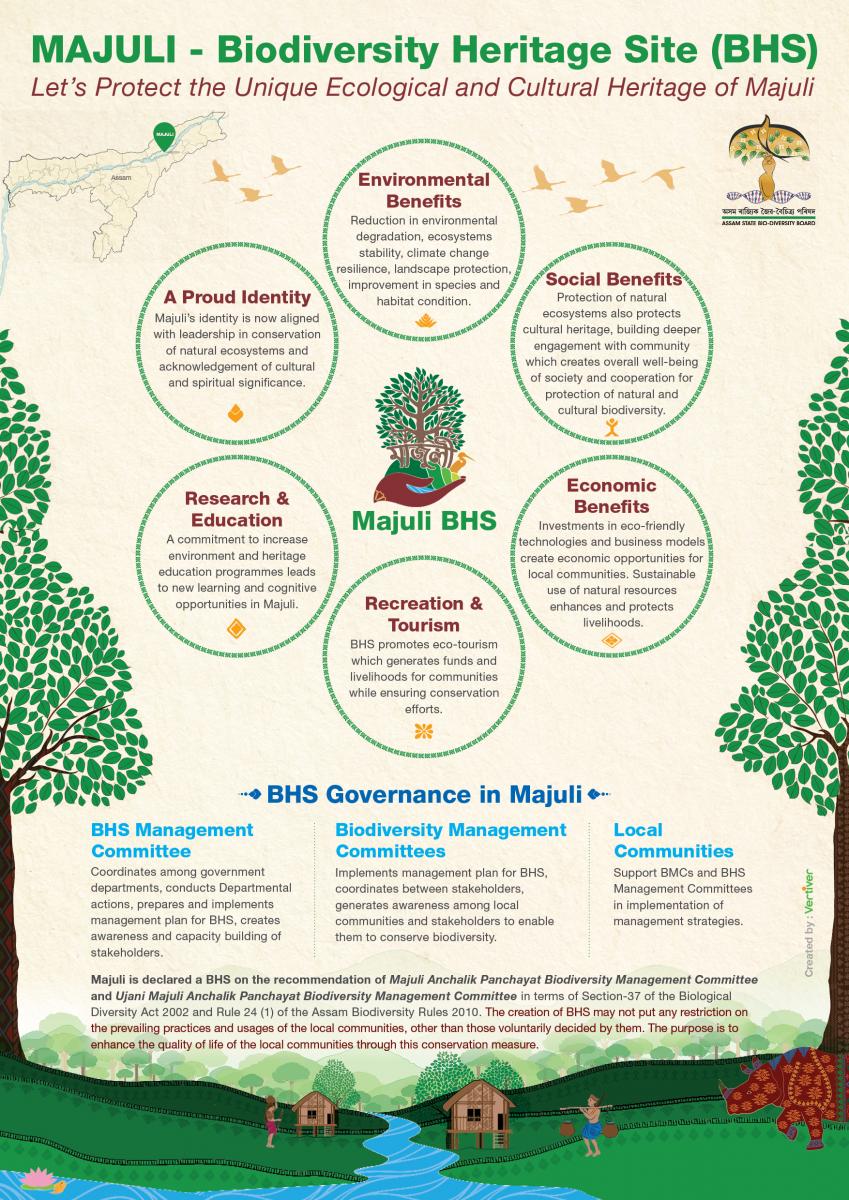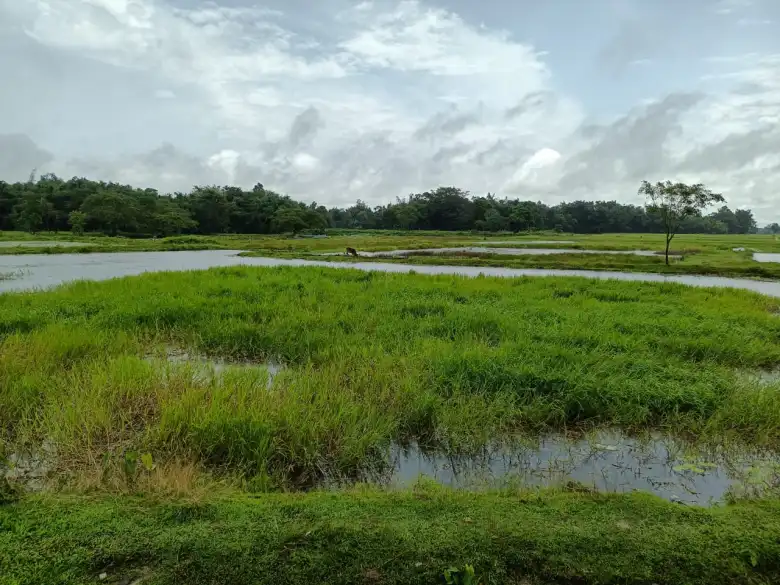Government of Assam
Under Section- 37 of Biological Diversity Act, 2002 and Rule 24(1) of the Assam Biodiversity Rules 2010, the State Government upon recommendation of the Assam State Biodiversity Board from time to time may notify in Official Gazatte areas of biodiversity importance as Biodiversity Heritage Sites (BHS). At present three (3) sites i.e. Majuli BHS, Borjuli Wild Rice BHS and Hajong Tortoise Lake BHS has been notified by the State Government as Biodiversity Heritage Sites of Assam.
The site covers an area of 875 sq. km. Majuli is perhaps the second largest river island in the world, and comprises of a large riverine island with innumerable small islets, locally called chapories. The main island is surrounded by more than twenty chapories. Majuli with its fertile floodplains and highly productive wetlands forms identical habitat for a variety of birds and animals. Majuli also produces about a hundred different varieties of rice. Among the fascinating arrays grown is Komal Saul, Bao Dhan and Bora Saul. Apart from these, Majuli river Island is unique for its cultural diversity also. This is the place where the 15th century saint and fountain head of Assamese culture, Sankardeva, first established a Satra or Neo-Vaishnavite monastery, born of insightful discourses with his spiritual successor, Madhabdeva. Today, Majuli is the principal seat of Vaishnavite faith, culture and practice. The treasures of Majuli are undoubtedly it's Satras.
Geographical Location: 26°57'59"N 94°10'26"E (Central Point Location)

Borjuli village under Sonitpur district of Assam harbour a good population of wild species of rice -Oryza rufipogon. The wetland located at 26.810888 N, 92.623559 E having area of 0.41 ha harbour a viable population of wild rice. This is a unique site due to population richness of this species, but both are vulnerable to climate change and anthropogenic activities. The species (O. rufipogon) possess genes for disease and pest resistance, tolerance to submergence and salinity, thus, important resource in breeding and improvement of rice crop and many of our current varieties derive many genes from this species. Its in-situ conservation for evolutionary process and adaptation to changing climate is important. This will be wealth for posterity not only for India but for the whole world.
Oryza rufipogon, the progenitor of present-day cultivated rice, O. sativa, is one of the most studied wild species of rice. It is a perennial plant commonly found in a marsh or aquatic habitats of eastern and southern Asia. O. rufipogon is photosensitive in nature and flowers during short days during the months of November and December. The seeds have a tendency to shatter as soon as they mature. It is tolerant of flooding and acidic soils.
Geographical Location: 26.810888 N, 92.623559 E

The ‘Hajong Tortoise Lake Biodiversity Heritage Site’ is situated in the Langting Mupa Reserved Forest of the Dima Hasao District about 21 Km from the Maibang Town. The total area covered is 526.78 ha, which also includes the surrounding area of the Lake.
This lake is a natural habitat of Critically Endangered freshwater ‘Black Softshell turtle’ Nilssonia nigricans and Endangered ‘Indian Peacock Softshell turtle’ Nilssonia hurum besides other major flora and fauna. The BHS covers a total area 526.78 hactare (including lake area of 3.43ha). The altitudes range between 1627 ft to 1677 ft.
This site also harbour the threatened species like Critically Endangered Chinese Pangolin (Manis pentadactyla), Vulnerable Clouded Leopard (Neofelis nebulosa), Leopard (Panthera pardus), Asiatic Black Bear (Ursus thibetanus), Fishing Cat (Prionailurus viverrinus), Sambar (Rusa unicolor), Western Hoolock Gibbon (Hoolock hoolock), Capped Langur (Trachypithecus pileatus), Wreathed Hornbill (Rhyticeros undulatus) etc.
Geographical Location: 25021/43.4// N, 25021/48.2// N, 25021/46.8// N, 25021/46.7// N and 93013/57.4//E, 93014/03.1//E, 93013/51//E, 93013/48.3//E
